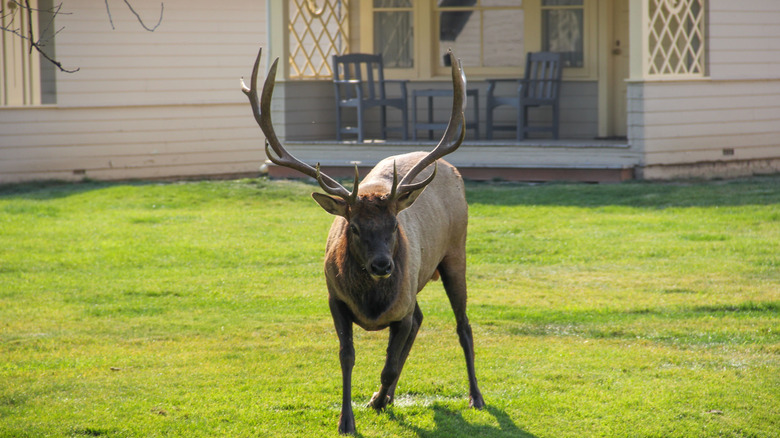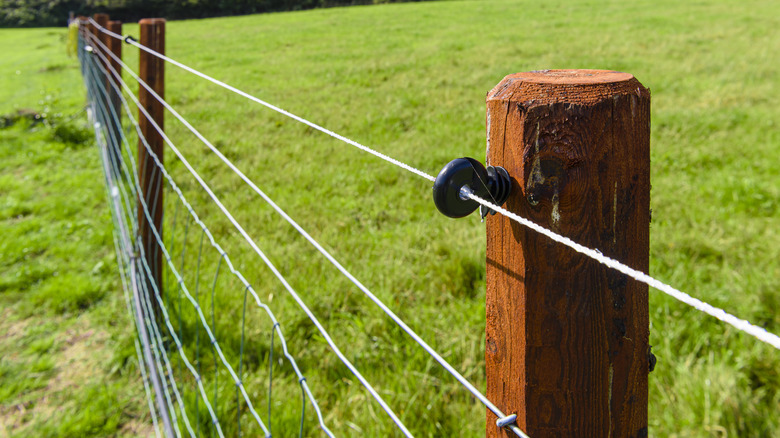The Very Best Way To Keep Elk Out Of Your Yard
If you live in a more remote or rural area, you're probably lucky enough to spot wildlife regularly. Observing these animals from a distance can be fun, but it's not quite as enjoyable when they start visiting your yard — particularly when they are large animals like elk. Just like smaller animal pests, such as squirrels or rabbits, elk will eat plants and foliage on your property. However, given their size, the damage they can cause is more extensive, which can result in expensive repairs for homeowners. While you can try a few different ways to keep elk from eating your garden and landscape plants, the most effective way to prevent them from entering your yard is with a strong, durable barrier, like a fence. Both tall woven wire and electric fences can be effective deterrents, depending on your budget.
Elk are large animals, with adults averaging approximately 400 pounds. Males have large antlers with at least six tines sprouting off the two main branches. They tend to graze on grass, shrubs, tree seedlings, and saplings. They also enjoy forbs, which are herbaceous, flowering plants often referred to as wildflowers. In addition to eating the plants and foliage in your yard, elk can damage plants by trampling over them if traveling in groups, as well as trees by rubbing their antlers against the trunks.
Fence in your yard with tall, woven wire
Physical barriers are the best way to deter elk from visiting your yard, so fencing is the obvious answer for most homeowners. However, while there are many fence ideas to keep annoying animals and pests out of your yard, erecting an elk-proof fence can be trickier due to their size. For starters, your fence must be between 6 and 8 feet tall to keep out elk. Elk can use mounded snow to help them jump over fencing, so opt for a taller fence in an area that receives heavy snow.
Woven wire fencing has the most proven track record for keeping out elk, but it's a good idea to top the fence with strands of smooth or barbed wire to discourage jumping. For the fence to be effective, though, the elk must be able to see it. Add metal reflectors or polytape to the wire to help make it more visible to the animals, so they know to avoid it.
Erect an electric fence to deter elk from your yard
For some homeowners, choosing the right backyard fencing to keep out elk can come down to a matter of budget. Tall, woven wire fences can be pricey, so a high-voltage electric fence may be a more affordable yet equally effective alternative if you have a large area to fence. These fences create a psychological barrier for the animals, too. If the elk are traveling in a group and see one of their numbers get shocked, they will observe the pain reaction and realize that the fence should be avoided, even if they haven't been shocked themselves.
The key to an effective electric fence is to ensure it has sufficient voltage to shock the elk. These animals have hollow hair that can actually act as an insulator, protecting them from the electric current. Your fence should have between 3,500 and 7,500 volts to effectively shock elk. It doesn't need to be quite as tall as a woven wire fence, though. A 6-foot electric fence is usually effective in keeping out elk.


